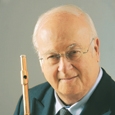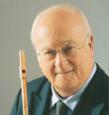Just as I have treasured and accumulated thousands of verses of poetry, as well as many from a variety of sources, I know full well that quotes can be manipulated to say almost anything, even the opposite of the intended meaning. Perhaps this is why politicians of every nation dislike being quoted. Like poetry, however, these morsels of wisdom provide me with delicious food for thought as I roll them around in my ear, mouth, and brain. Recently a quote led me to reflect on musical style, the final result when the elusive questions about phrasing and interpretation have matured.
"Style is man himself. It is but order and movement put into one’s thoughts." – Writer and philosopher Buffon
Some people have the idea that the best style is the richest and most ostentatious, whether in music, fashion, or in cooking. They add even more stuff to the mix in an attempt to impress neighbors and colleagues. Beware of improved musical editions and modified foodstuffs alike. These days it is hard to find anything that does not claim to have been improved upon. There is milk from hormonally injected cows, enriched bread, antibacterial soap, low calorie sweetener, and of course, improved music.
Mahler reorchestrated Schumann and even Beethoven; since then editors have done likewise with some of our most cherished repertoire. Perhaps they have misunderstood Rainer Maria Rilke’s admonition in Letters to a Young Poet: "Art demands from its faithful servants as much as from its creators." It is hard to imagine an attempt to improve a classical painting, but some nudes were painted over by order of the church as improvements made in the name of morality.
Amidst claims that simple, fresh foods are the best, one fast food chain advertises its sandwich as "five meats and three cheeses with everything on it." This may be more for your money, but in the process, you lose the essence of the thing. On a recent flight I was served a salad with a small container of dressing that could have and should have been limited to a few basic ingredients. This one had been improved. The ingredients label read "soybean oil, sour cream (cream, milk, locust bean gum, carageenan, enzymes), water, vinegar, eggs, lemon juice from concentrate, egg yolks, cucumbers, com syrup solids, salt, sugar, herbs and spices, onion, mustard flour, natural flavor, xanthan gum (food fiber), garlic. All that for one ounce of "naturally fresh" salad dressing.
Flute style is sometimes like this, with too many ingredients added to the basic mix in an effort to improve it: stuff the low notes, put in a good buzz, and cut through a texture at any cost. As a listener, I do not like the flute to sound like a trombone. I have nothing against the trombone, but I prefer the flute to sound like itself, poetic and fragile, rather than the bombast created by some recent mouthpieces. Allow the flute to have its color: dark and soft in the low notes, brilliant and lyrical in the third octave, warm and human in the middle range.
At one time and with the best of intentions J.S. Bach was edited by adding metronome markings and dynamics befitting the Romantic era, then performed by full Wagnerian orchestras and huge pipe organs. Today style is usually determined by practices in the country and the period in which a piece was written, but even within an historical period styles can vary. Tuning was largely a personal reference until J .S. Bach laid the groundwork for equal temperament. Before 1800 some pipe organs were tuned very high and some very low; the Hannover A was not the Coethen A and performance styles varied from one province to the next. The desire for authenticity has dominated musical style in recent times, yet no one should claim absolute authenticity.
In matters of style, less is more. Don’t try to say too much. Mstislav Rostropovitch commented, "It takes hours and hours to master a lot of notes, but it takes years to play a simple phrase." Most of the conductors, soloists, and singers I admire have a quality of inimitable simplicity. In their care, music becomes evident. Jean Cocteau, the novelist, playwright and poet said "Style is a very simple way of saying very complicated things." In musical interpretation, good style is doing as little as possible, but simplicity is not easy.
According to Denis Diderot, "The desire for the extraordinary is the character of mediocrity. When one despairs to achieve a beautiful, simple, and natural thing, he seeks something bizarre." Stated simply, the music of the last two centuries has its roots in dance and song; phrasing relates to the voice and rhythm to instrumental dance. The great merit of the Baroque revival, more than the desire for authenticity, is its quest for these stylistic roots. As Honore de Balzac said in The Unknown Masterpiece, "The mission of art is not to copy nature, but to express it! We have to seize the spirit, the soul, the face of things and beings."
Style and interpretation comes from enjoying and understanding. It’s what the senses catalog and associate with a memory of experiences and interpretation is not something that becomes instinctual and hormonal out of a clear blue sky. It should feel natural to us and to our listener , bur it must be cultivated. There is a technique of interpretation; it should sound simple, because like culture, "it is what’s left when you have forgonen everything." Interpretation is too often like jam: the less one has, the more one spreads it.






